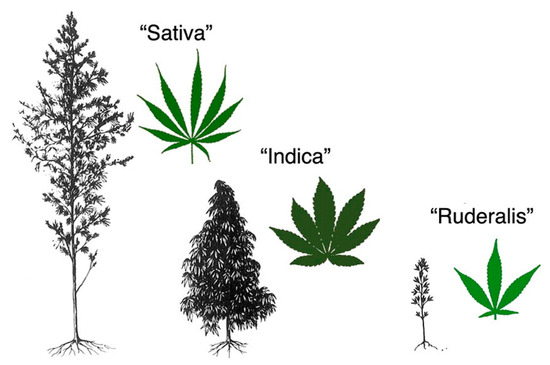
“Phytocannabinoids possess a wide range of immune regulatory properties, mediated by the endocannabinoid system.
Monocyte/macrophage innate immune cells express endocannabinoid receptors. Dysregulation of macrophage function is involved in the pathogenesis of different inflammatory diseases, including inflammatory bowel disease.
In our research, we aimed to evaluate the effects of the phytocannabinoids D9 tetrahydrocannabinol (THC) and cannabidiol (CBD) on macrophage activation.
Macrophages from young and aged C57BL/6 mice were activated in vitro in the presence of pure cannabinoids or cannabis extracts. The phenotype of the cells, nitric oxide (NO•) secretion, and cytokine secretion were examined. In addition, these treatments were administered to murine colitis model. The clinical statuses of mice, levels of colon infiltrating macrophages, and inflammatory cytokines in the blood, were evaluated.
We demonstrated inhibition of macrophage NO• and cytokine secretion and significant effects on expression of cell surface molecules. In the murine model, clinical scores were improved and macrophage colon infiltration reduced following treatment. We identified higher activity of cannabis extracts as compared with pure cannabinoids. Each treatment had a unique effect on cytokine composition.
Overall, our results establish that the effects of cannabinoid treatments differ. A better understanding of the reciprocal relationship between cannabinoids and immunity is essential to design targeted treatment strategies.”
https://pubmed.ncbi.nlm.nih.gov/35892693/
“Overall, our results indicate both similarities and differences between the impact of CBD- and THC-based drugs. Although all the tested treatments had an anti-inflammatory effect, their specific effects (for example, on phenotype of the cells and on cytokine production) differed. These differences may influence the clinical outcome of the treatment. We were surprised to find very similar anti-inflammatory results for the two cannabis extracts, which had diverse content of THC and CBD. This could suggest that THC/CBD content may not be the best indicator for anti-inflammatory properties of a cannabis-based drug. These results highlight the need to expand the research on the interplay between cannabinoids and other phytochemicals in the cannabis extracts. A better understanding of the effects of each molecule and the synergism between these molecules on the immune response will assist physicians to provide the best possible individually targeted treatment for their patients and will allow the design of new treatments.”


 “The Endocannabinoid System (ECS) is primarily responsible for maintaining homeostasis, a balance in internal environment (temperature, mood, and immune system) and energy input and output in living, biological systems.
“The Endocannabinoid System (ECS) is primarily responsible for maintaining homeostasis, a balance in internal environment (temperature, mood, and immune system) and energy input and output in living, biological systems. 

 “Cannabis has been used for its medicinal purposes since ancient times. Its consumption leads to the activation of Cannabis receptors CB1 and CB2 that, through specific mechanisms can lead to modulation and progression of inflammation or repair. The novel findings are linked to the medical use of Cannabis in gastrointestinal (GI) system.
“Cannabis has been used for its medicinal purposes since ancient times. Its consumption leads to the activation of Cannabis receptors CB1 and CB2 that, through specific mechanisms can lead to modulation and progression of inflammation or repair. The novel findings are linked to the medical use of Cannabis in gastrointestinal (GI) system. “The cannabis plant has been widely researched for many therapeutic indications and found to be effective in many chronic conditions such as epilepsy, neuropathic or chronic pain and more. However, biased opinion against compounds of the plant, regulatory as well as compounding challenges have led to very few approved medicinal products. Those formulations which are approved are dosed several times a day, creating an unmet need for controlled release (CR) formulations of
“The cannabis plant has been widely researched for many therapeutic indications and found to be effective in many chronic conditions such as epilepsy, neuropathic or chronic pain and more. However, biased opinion against compounds of the plant, regulatory as well as compounding challenges have led to very few approved medicinal products. Those formulations which are approved are dosed several times a day, creating an unmet need for controlled release (CR) formulations of 
 “Many anti-nausea treatments are available for chronic gastrointestinal syndromes, but data on efficacy and comparative effectiveness are sparse.
“Many anti-nausea treatments are available for chronic gastrointestinal syndromes, but data on efficacy and comparative effectiveness are sparse. “Chronic intestinal pseudo-obstruction (CIPO) is a rare and challenging cause of pediatric intestinal failure, requiring long-term parenteral nutrition in most cases. Despite optimal management, some patients experience chronic abdominal pain and recurrent obstructive episodes with a major impact on their quality of life.
“Chronic intestinal pseudo-obstruction (CIPO) is a rare and challenging cause of pediatric intestinal failure, requiring long-term parenteral nutrition in most cases. Despite optimal management, some patients experience chronic abdominal pain and recurrent obstructive episodes with a major impact on their quality of life.